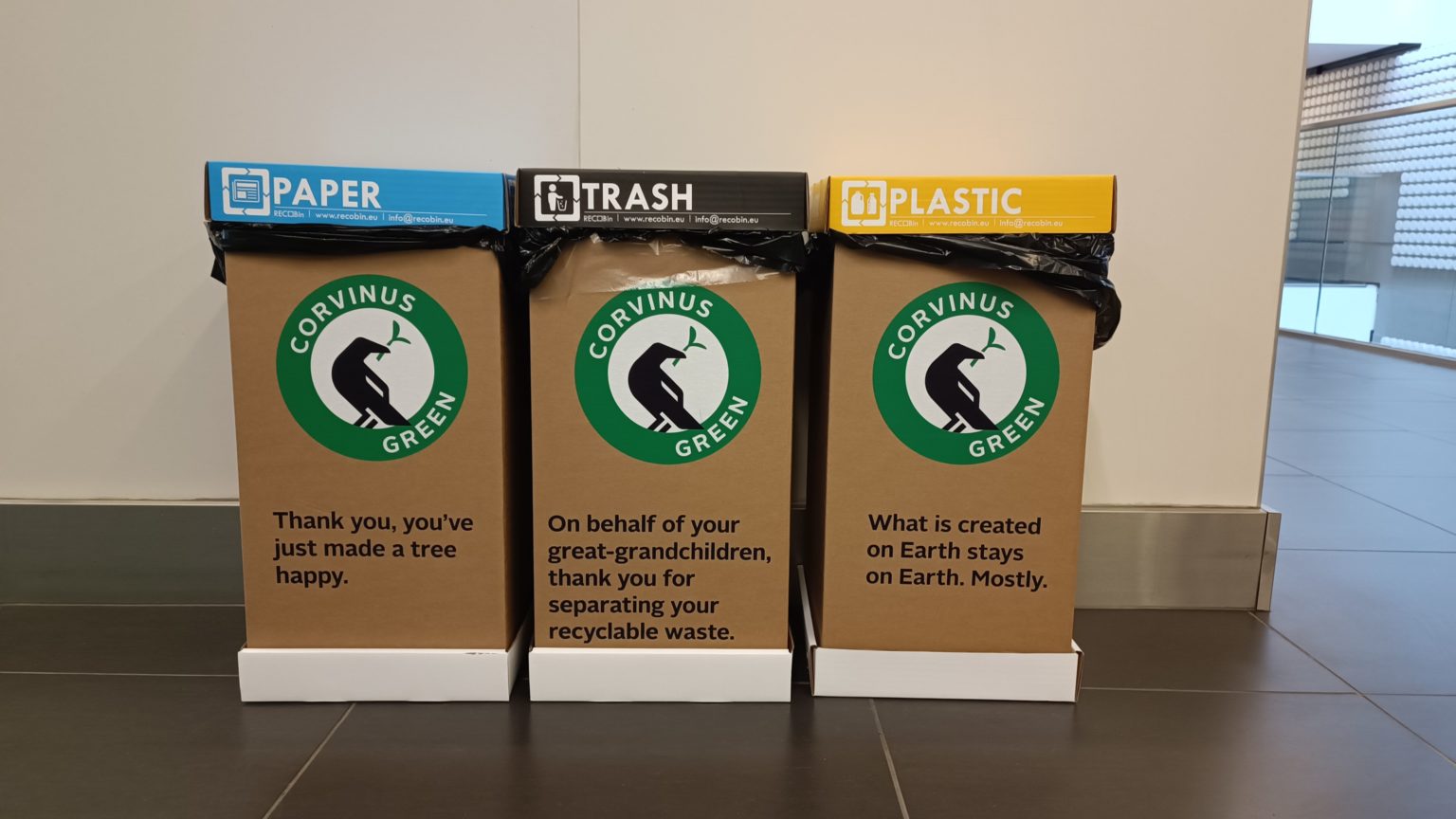Where have the bins gone from the seminar rooms?

Almost 230 tonnes of waste is transported from Corvinus University buildings every year, which corresponds to an average waste generation of around 430 EU citizens per EU citizen per capita.
In 2023, 12 percent of the waste collected was taken out of separate collections, meaning that 88 percent of the waste generated in buildings ends up as municipal waste. The share of selective collection could therefore be significantly increased at Corvinus, which would help us all to contribute to a more sustainable operation.
Less municipal waste bins in Building C as part of a pilot project
Citizens of the university have already seen the removal of the communal bins from the seminar rooms in Building C. The aim of the measure is to encourage more people to use one of the selective collection islands instead. Based on the experience in Building C, it is planned that a similar project could be carried out in Building E and the Salt House if the roll-out is successful and the experience is positive.
35 percent of university staff have joined an initiative whereby departments can voluntarily hand in their office bins using the selective islands instead. Heads of departments can still join and receive office plants for completing the initiative. This is also the final part of the three-raven challenge for colleagues, the first of which involved cancelling bottled water orders and the second of which involved optimising household appliances. Those who complete all three challenges can organise a community-building programme for themselves from the central budget. These calls are also open for applications.
Although the removal of internal communal bins may lead to a short-term loss of convenience, in the longer term it could significantly increase the proportion of selective islands and thus the proportion of selective waste collection. It also helps us to think more carefully about whether we really needed the waste or could have avoided it if we had made a different choice earlier, rather than making a habitual move.
We also supported this process by installing more than 320 new separate waste bins in our buildings last year. The selective bins, made from recycled cardboard, are suitable for collecting paper and plastic. We have placed the islands at the busiest junctions, stairs, auditoriums and around toilets so that everyone has easy access.
Feedback on the campaign is constantly being collected, so we welcome any suggestions you may have to make waste management more convenient and sustainable for the university. Changes in the amount of waste generated and the rate of selective collection will be monitored continuously, and the experience will be reported in detail in the future, with further improvements or revisions to the practice made where necessary.
Is separate waste collection alone enough?
The measure also aims to raise awareness. Reducing the waste burden is a shared responsibility, and one possible method is the 5Rs model, which can help us move towards a zero-waste lifestyle.
We can think about whether we really needed the product that created the waste and reject what we don’t really need (Refuse). We can also reduce our waste burden, for example by using less packaging (Reduce). If we needed it anyway, we can reuse it (Reuse) or repurpose it for a different purpose (Repurpose). Then there is the issue of selective waste collection (Recycle), which gives new meaning to discarded items.
In the model, separate collection and recycling are therefore only the last step in the process of properly managing the waste that is generated. This is important because recycling is a complex and complicated process and the economic return is questionable. Moreover, research has shown that it can result in significant microplastic pollution, so the cleanest plastic is the one that is never created in the first place.
If we still couldn’t avoid it, then of course it’s better to have separate collection than to have the waste in a landfill. The yellow bins are for plastic waste, including PET bottles for soft drinks and mineral water, rinsed household bottles and their screw-off caps, clear household foil, rinsed milk and yoghurt cups, rinsed beverage cartons. Only clean paper waste, such as newspapers, corrugated papers, wrapping papers, flattened cardboard boxes, can be placed in the blue collection containers. Detailed information on sorting is available on the FKF website.
The Corvinus University of Budapest is committed to supporting community sustainability activities and to operating more sustainably, because to achieve significant change, collective action is needed, which is what the Corvinus Green project is all about.